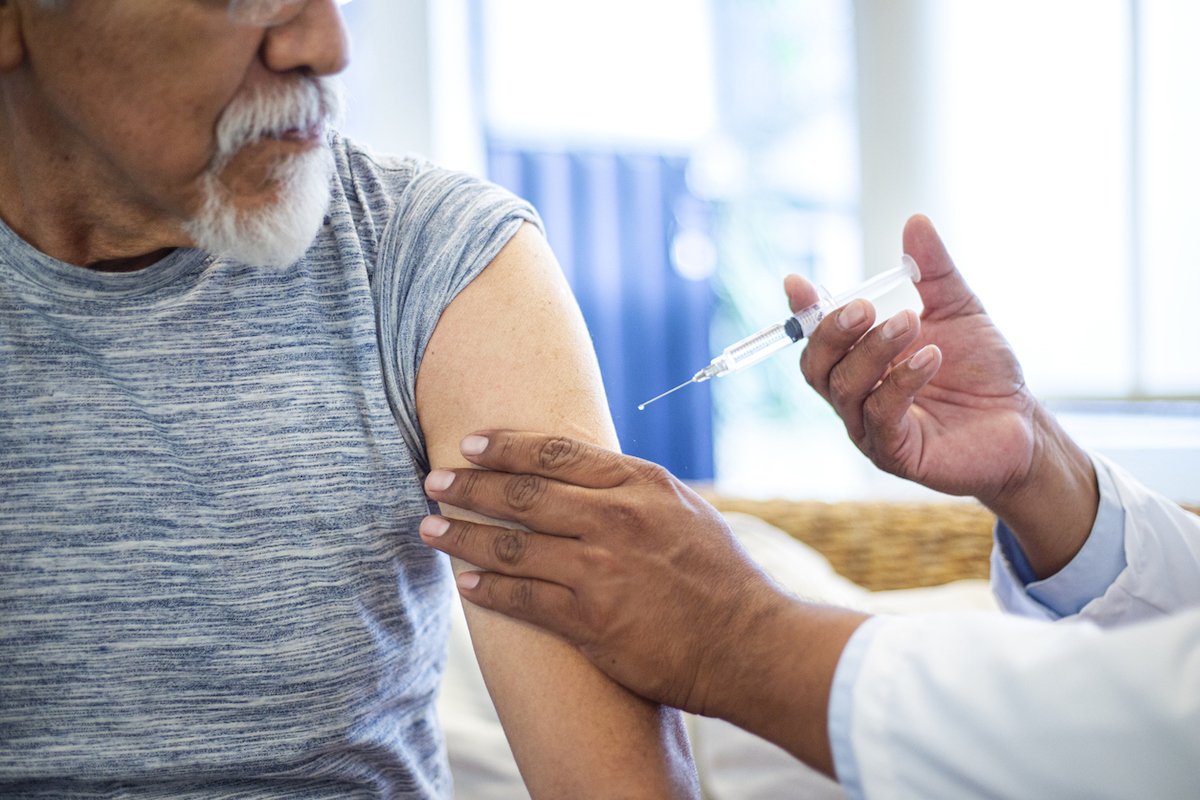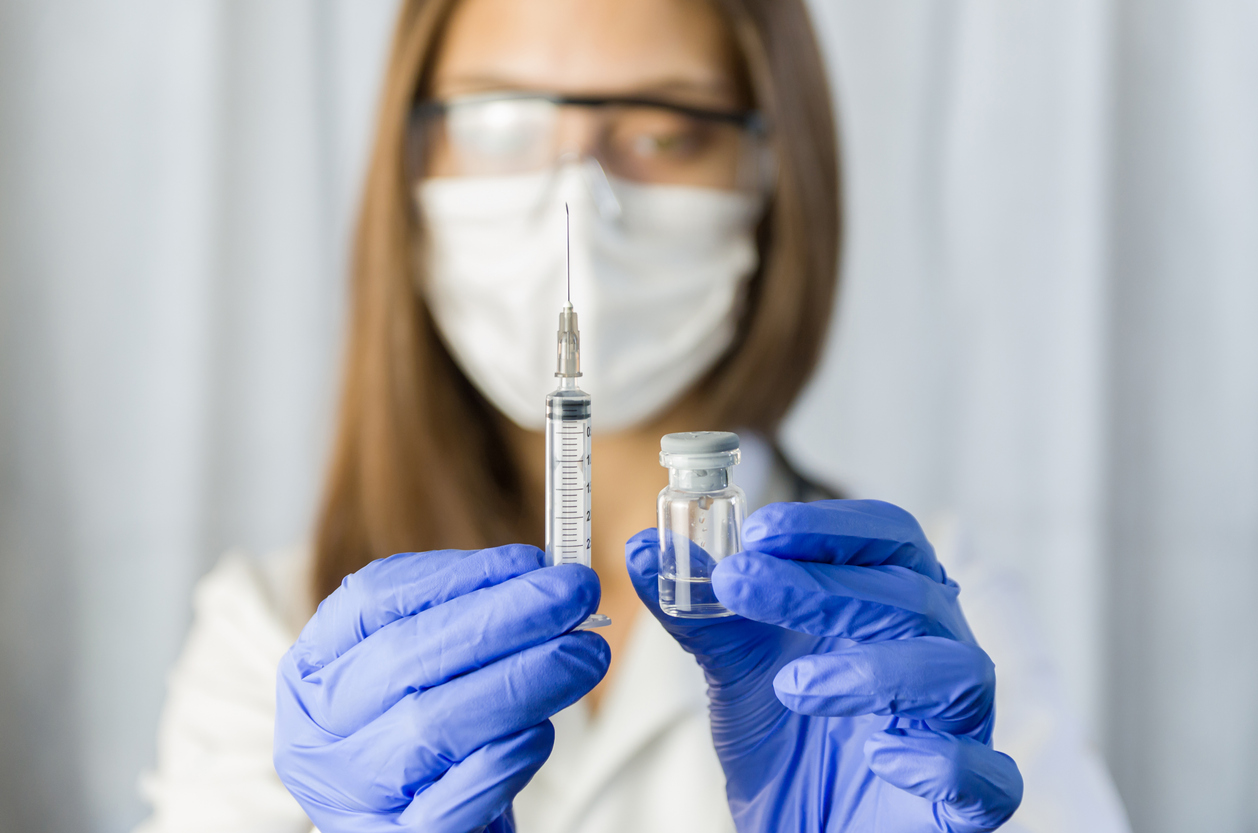Among the millions of vaccinated Americans, 5,800 people still got the virus as of April 13, the CDC confirmed to Best Life this week. At that time, more than 75 million people were fully vaccinated in the U.S., which means they only represent 0.008 percent of the fully vaccinated population. Clearly, it’s a very rare occurrence, but it is more common with a certain group: Approximately 65 percent of vaccinated people who got COVID after their shots were women, the CDC said.ae0fcc31ae342fd3a1346ebb1f342fcb “You will always see some breakthrough infections no matter the efficacy of your vaccine,” Anthony Fauci, MD, chief COVID adviser to the White House, told The Wall Street Journal. “Before people get excited about the quantitative number of infections, they need to understand what the denominator is, and we’re going to see breakthroughs in numbers that are going to be well within the 90 percent, 95 percent, 97 percent effectiveness rates of the vaccines.” Tara Smith, PhD, a professor of epidemiology at Kent State University, told NBC News that the rate of nearly 6,000 reported breakthrough infections is “a really good scenario.” And for more health news delivered straight to your inbox, sign up for our daily newsletter. The CDC also pointed out that more than 40 percent of breakthrough cases were found in people older than 60, but according to Fauci, that’s to be expected, due to immune response and underlying conditions. “The breakthrough were predominantly elderly individuals. And it’s not surprising,” Fauci said during a White House press briefing on April 9. “It is likely that elderly individuals, particularly if they’re frail and have underlying conditions, might not have responded as well to the vaccine—that it is unfortunate but not surprising.” He added: “There’s nothing there yet that’s a red flag. We obviously are going to keep an eye out on that very, very carefully, but I don’t see anything that changes our concept of the vaccine and its efficacy.” And for more on how much one vaccine keeps you safe, check out This Is How Much the Moderna Vaccine Really Protects You, New Study Says. Additionally, the CDC said that 29 percent of breakthrough cases were without symptoms and 7 percent (396 people) were hospitalized. In total, 74 people—which is about 1 percent—died after getting a breakthrough infection. Fauci pointed out during a virtual White House briefing on April 12 that “even if a vaccine fails to protect against infection, it often protects against serious disease.” He cited the flu as an example of why vaccines are so important, noting that 7.5 million illnesses and 6,300 deaths were prevented in the 2019-2020 flu season when the flu vaccine was only 39 percent effective. “If you get vaccinated, no doubt you’re less likely to get the flu. But even if you do get flu and get sick, vaccination can reduce the severity and duration of illness and could help get you out of trouble,” Fauci said. David Hirschwerk, MD, an infectious-diseases physician in New York, made a similar comparison when talking to The Wall Street Journal. “People who are getting COVID, despite the vaccine, there is a very good chance that those individuals would be in the hospital, some of them critically ill, not recovering at home, if they hadn’t gotten the shot,” he explained. And for more on the side effects of one vaccine, check out Pfizer Caused This Reaction in Half of Recipients, New Study Says. The CDC told Best Life that breakthrough infections make up a small percentage of people who are fully vaccinated and all eligible people should get vaccinated as soon as they can. Additionally, the agency advised that, like unvaccinated people, fully vaccinated people should continue to adhere to basic safety precautions when in public—wearing a mask, maintaining six feet of distance, avoiding crowds and poorly ventilated indoor spaces, and keeping up with your hand hygiene. In addition to developing a national COVID-19 vaccine breakthrough database “where state health department investigators can currently enter, store, and manage data for cases in their jurisdiction,” the CDC said they’re “monitoring reported cases for clustering by patient demographics, geographic location, time since vaccination, vaccine type or lot number, and SARS-CoV-2 lineage.” They’re looking to do genomic sequencing to identify if certain variants were more likely to cause breakthrough cases. NBC News also points out it’s not known whether patients with breakthrough infections had risk factors that made them more susceptible to COVID or whether or not they were following those aforementioned safety guidelines. However, the CDC is planning to start publishing breakthrough infection information on its website beginning Monday, according to NBC News. And for more on the future of vaccines, check out Moderna CEO Says There Could Be a Big Difference in Your Next Vaccine.



